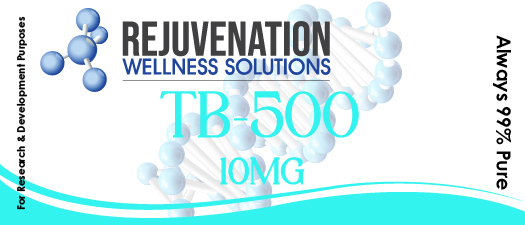TB-500 10MG
SKU : TB50010MG
$60.00
TB-500 exhibits a multi-faceted mechanism of action in tissue repair and the healing of wounds.
9 in stock
| Quantity | Range | Discount |
|---|---|---|
| From 6 to 9 | 6 - 9 | 5% $57.00 |
| From 10 to + | 10 + | 10% $54.00 |
- Pickup: Available today at store
- 1 Year Local Official Distributor Warranty
Description
TB-500, a fragment of Thymosin Beta-4 (Tβ4), initially isolated from bovine thymus tissues in 1981, has been at the forefront of molecular and regenerative medicine research. Its primary structure consists of a linear chain of 42 amino acids, exhibiting a high degree of sequence homology with naturally occurring Tβ4. This peptide has drawn significant attention for its potential role in promoting cellular repair, angiogenesis, and tissue regeneration, primarily through its interaction with the G-actin monomer.
At the molecular level, TB-500 modulates actin polymerization, a critical process in cell structure and motility. By binding to actin, it plays a pivotal role in actin’s sequestration and polymerization dynamics, facilitating cellular migration and morphogenesis, essential in tissue repair and regeneration. This interaction is particularly crucial in the context of connective tissue healing, where the reorganization of the cytoskeleton is necessary for cellular migration and extracellular matrix remodeling.
As far as wound healing and tissue repair, TB-500 exhibits a multi-faceted mechanism of action. It promotes endothelial and keratinocyte migration, enhances angiogenesis, and mediates the upregulation of metalloproteinases and downregulation of inflammatory mediators. These actions collectively contribute to improved wound healing dynamics, characterized by enhanced tissue granulation and reduced fibrosis.
In the cardiovascular system, TB-500’s role extends to cardioprotective effects. It has been observed to support cardiac muscle cell migration and survival, integral to myocardial repair following ischemic injuries. This is attributed to its ability to upregulate factors such as VEGF (vascular endothelial growth factor), crucial for neovascularization and improved blood supply to the damaged cardiac tissue.
Musculoskeletal applications of TB-500 have shown promise in skeletal muscle repair. By modulating actin dynamics, it aids in myocyte proliferation and differentiation, essential for muscle fiber regeneration. This property is particularly advantageous in scenarios of muscle atrophy or injury, where rapid restoration of muscle tissue integrity is desired.
Moreover, in animal models, TB-500 has demonstrated additional systemic effects, such as improved insulin sensitivity and glycemic control, potentially linked to its influence on cellular metabolism and inflammatory pathways.
However, despite these promising in vitro and animal model results, human clinical data remains limited. The studies conducted in humans, including those targeting venous ulcers and severe dry eye syndrome, have shown encouraging outcomes like expedited healing processes and reduced symptoms. Yet, comprehensive clinical trials are required to substantiate these findings and fully elucidate the therapeutic spectrum and safety profile of TB-500 in human pathology.











